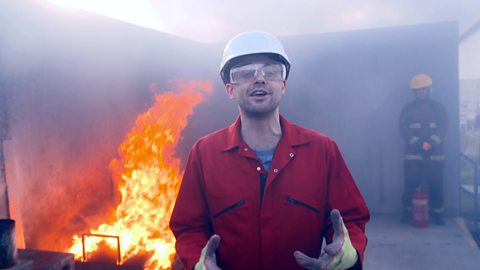STEVE:This is Scalby Bay near Scarborough in North Yorkshire and not many people know this but it's one of the best places in Britain to find something amazing that was made millions of years ago. The footprints of dinosaurs but first we need to find some.
STEVE:This is will, he's a dinosaur expert. Will, you're gonna help us find the footprints.
WILL:That's the plan yeah. So we're gonna have a look on this beach and see where we're gonna find them.
FEMALE IN PINK COAT:Yeah, where abouts do we need to look to find them?
WILL:Where do we need look for them? That's a dead good question. We don't want to be looking on the soft sand, we want to be looking on the really hard rock.
STEVE:What does it look like? How many toes does a dinosaur have?
FEMALE IN PINK COAT:Three.
STEVE:You think three? Is that what we're looking for? Does that soundβ
WILL:Yeah. Oh, so you might leave a three-toed footprint behind. And we are no more than 25m away from your very first dinosaur footprints.
STEVE:Cool.
WILL:Shall we go and have a look?
ALL: Yeah.
WILL:Off we go then.
ALL:Steve! Steve!
STEVE:Have you found one?
FEMALE IN PINK COAT:We think so.
STEVE:Wait, so what am I looking at?
FEMALE IN PINK COAT:So there's one here, one there and one there.
STEVE:Let me feel. So it goes in like that-- Shall we try and get the water out? Here's what I'm thinking though - this could just be three dips in the ground couldn't it.
FEMALE IN RED COAT:Yeah.
STEVE:Just like coincidence. Maybe we need to find some more and then we can be sure that it's definitely a dinosaur footprint and not justβ
FEMALE IN PINK COAT:I think there's one over there as well.
STEVE:What another one?
FEMALE IN PINK COAT:Yeah.
FEMALE IN RED COAT:Yeah.
STEVE:Alright so is this definitely another one?
STEVE:Let's have a look.
FEMALE IN BLACK COAT:Yeah, it's here, here, and here.
STEVE:Oh yeah. Shall we try and-- shall we look for another one.
MALE IN DARK BLUE COAT:Will?
WILL:Yeah? What have we got?
MALE IN DARK BLUE COAT:We think this is one.
WILL:Oh wow, look, yeah, dinosaur footprint. Look at that, so there's a big toe here in the middle. can you see that one?
MALE IN DARK BLUE COAT:Yeah.
WILL:And you can see this one here. And these toes down here yeah. It's much better when you're down at my height, I must admit. So yeah it's really good this one.
STEVE:The footprints aren't that easy to see especially on camera so we're gonna fill the holes with this white gravel and that should make it easier to see. So if I just stick this down so there's one footprint there. Another one there. Another one there. Make sure that goes in there.
STEVE:That's a lot clearer now so we're gonna do the same thing all the way along. 'The children have been brilliant at spotting footprints I couldn't even see but the gravel reveals what they really are - a track of footprints left by one big dinosaur.
STEVE:This is great because you can see the footprints very clearly now. So you can imagine a dinosaur stomping across the ground but Connor has come up with a question that I don't know the answer to. Connor what was your question?
CONNOR:Well, how did the dinosaur make footprints in solid rock?
STEVE:That's a good question isn't it because, I mean, I can't make footprints in solid rock. So how did the dinosaurs do it?
STEVE:'Our dinosaur was alive about 165 million years ago. That's so long ago, that the world was a very different place and what is now Scalby Bay, was, in those days, a tropical river bank.'
STEVE:We're gonna recreate a dinosaur footprint here, we've got our muddy riverbank and we've got our dinosaur foot. Scarlett, can you bring that in? Right, and then we need to stomp on it and create a footprint. Nice. Alright so lift it out. Let's see what we've got. Alright, we've got a nice footprint there.
STEVE:'Most footprints get washed away, but we were lucky. Our ancient river flooded and filled the footprint with mud and sand, protecting it. So we've got our protective layer of sand. What happens next?
WILL:So next thing is, sea level rose so our oceans came in and they started to bury our seabed even more and I've got a handy little demonstration here. So if you imagine this is our ocean And if I turn it upside down you can see that its full of sand OK? All of that sand floating around and eventually you can see it start to settle down to the bottom.
WILL:So as that settles down we build up a layer actually down in our lid down here, if I move my hand it's a bit easier to see. We're gonna fill our lid up with the sand. There it comes you can see its coming up there. And that's what's happening in our ocean. So all of this is falling down to the sea bed
WILL:and it's protecting our sand with our footprint in which is great news because it means it's here for us to find.
STEVE:'So the world's changed again. Scalby is an ocean. Over millions of years, layer after layer of sand was dumped onto our footprint. Then it was a river back and layers of mud and dead plants were added. Then it was ocean again and more sand. Eventually our footprint is buried under kilometres of sand and mud.'
STEVE:'It's so heavy, the bottom layers are squeezed and compressed. and turned into rock.'
WILL:And that's the thing that traps our footprint forever more.
STEVE:So we've got these footprints but they're buried kilometres underground how can we see them now?
WILL:That's the next part of our story. The next thing that happens is we start to erode away our part of the world
STEVE:'It's taken tens of millions of years to slowly bury these footprints under rock. Now layer by layer the rock is very slowly worn away by sea and wind - a process called erosion. Eventually, the layer of rock with the footprints is revealed. 'Ah, how long does that take?
WILL:That took 100 million years. Leaving behind dinosaur footprints to be found all along our coastline.
STEVE:Amazing. These footprints took just seconds for the dinosaur to make but then it took millions of years for them to turn into rock and then millions more for them to be revealed here on the beach. And 20 years from now, they'll probably be gone but who knows what other footprints will be revealed.
Children work with a dinosaur scientist to find dinosaur footprints that have been fossilised into the rock on a beach.
The scientist explains how the footprints were made inside the hard rock and children model the process using layers of sand and mud.
The scientist explains how the fossilised footprints have then been revealed in the rock after millions of years by erosion.
The timescale for the whole process is discussed.
This short film is from the ΒιΆΉΤΌΕΔ series, Operation Awesome, in which students explore a range of amazing practical science challenges with presenter Steve Mould.
Teacher Notes
This is an effective introduction to how fossils are formed, and of how rocks change over time.
In this case they are βtrace fossilsβ from the footprints, rather than actual fossilised remains.
Your pupils could carry out an investigation into how rocks become eroded over time, using layers of sand, gravel and soil and observing the effect of water flowing over the top.
They could then suggest other factors which might cause erosion of rocks.
Pupils could explore other examples of fossils from photographs or actual specimens.
They could then go on to make their own fossils out of plaster of paris or similar in moulds.
Curriculum Notes
This short film will be relevant for teaching science at Key Stage 2 or Second Level in Scotland, or biology at Key Stage 3 or Third Level in Scotland.
More from Operation Awesome
Will pulleys allow children to beat Britainβs strongest man? video
Britainβs strongest man pulls a 12 tonne truck. Steve Mould challenges a group of 9 and 10 year olds to use the science of pulleys to do the same.
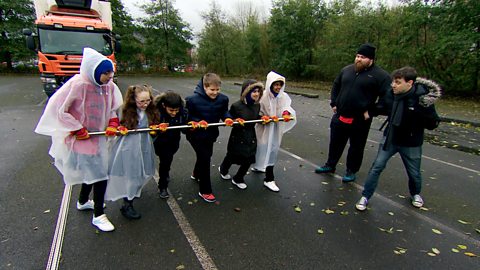
Will gears let children pull a piano uphill with their bikes? video
Presenter Steve Mould challenges a group of cycling 10 and 11 year olds to pull a piano up a hill. They investigate gears to see how bikes could complete the challenge.
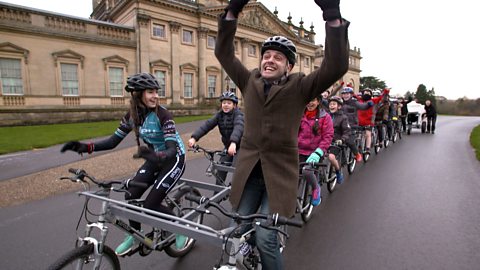
Helicopter rescue and the science of floating. video
Steve Mouldβs treasure is lost underwater. Children use the science of floating and displacement to raise it from the bottom of the pool with the smallest amount of air.
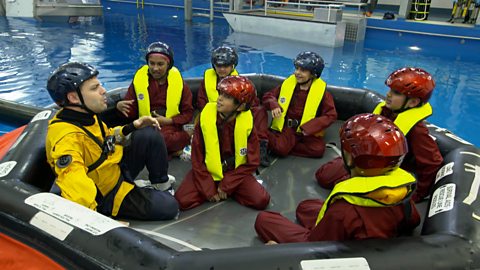
How to make the fizziest bath bomb. video
Challenged by Steve Mould to make the fizziest possible bath bomb, children test a range of recipes. They work out how to measure βfizzinessβ (the amount of CO2) and make sure itβs a fair test.
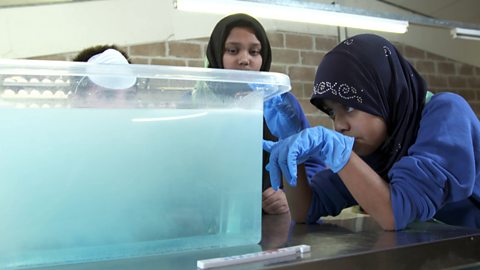
How to calculate the height of a dinosaur from its footprint. video
How do you find the height of the dinosaur from dinosaur footprints? Because human and dinosaur legs are similar, you can do it by measuring the length of your own leg and foot.
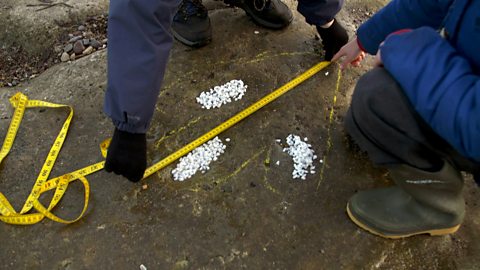
Seeing through smoke - the heat camera. video
A group of 10 and 11 year olds have to rescue someone from a smoke filled building in the dark. They get to choose a special camera to help. How will they pick the right one?
